Designed To Be Fit — Gym and Fitness Centre Interior Design
Corporate offices are incorporating fitness spaces as more and more employees expect companies to care about their whole well-being. Upscale hotels, resorts and country clubs are going a step further with full-scale training hubs to attract fitness-focused travellers looking for a distinctive wellness journey.How do we then use gym interior design to set up a fitness facility that elevates wellness experience and improve people’s quality of life? The thoughtful use of innovative materials and lighting, intelligent layout floor details, the language of colour and elements of biophilic design all work together to maximise the human senses.
Layout floor plan and space zoning
A successful fitness and gym design concept require particular attention with regards to space arrangement. Each space and its users have unique needs; therefore, each design scheme should provide the best possible environment that’s functional, safe and comfortable.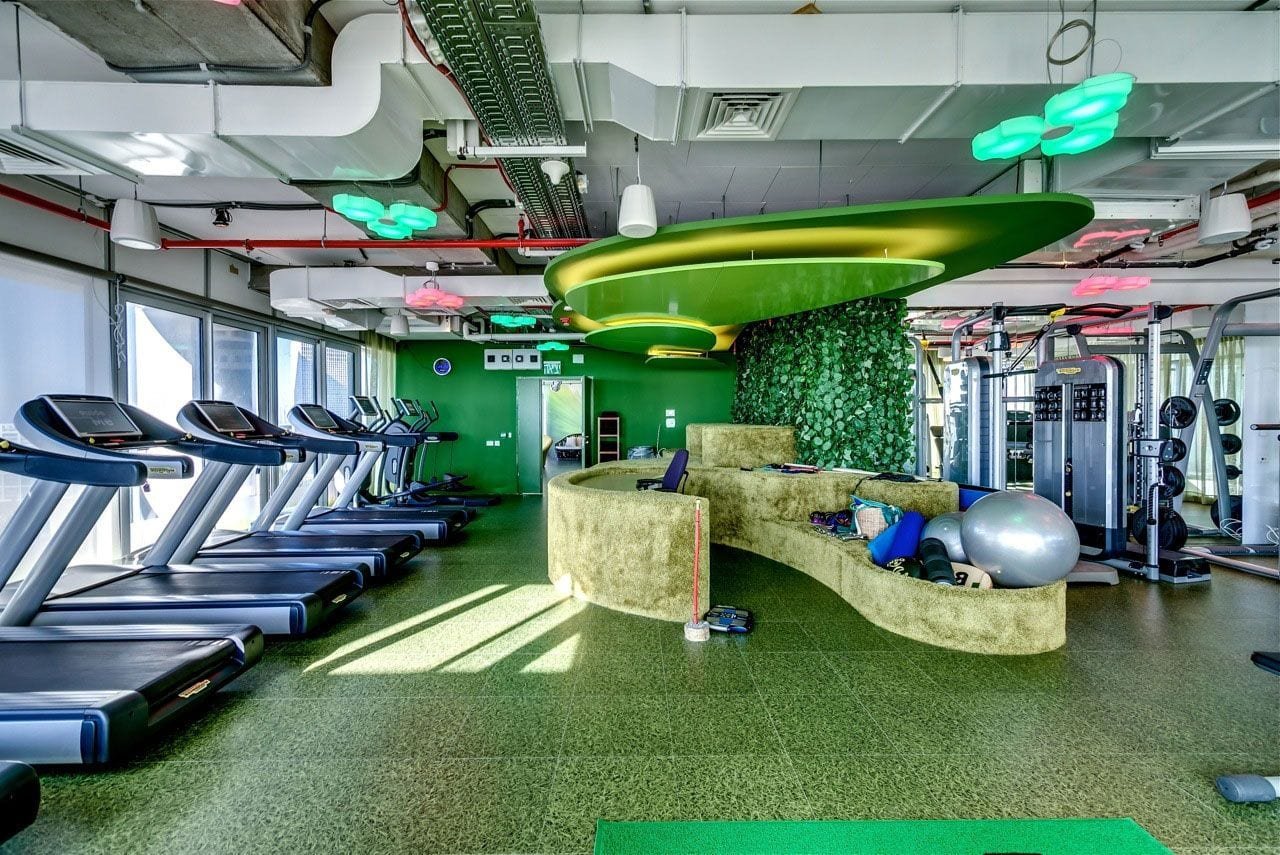 Source If the interior space is small, cramped and cluttered, then people feel less comfortable when training. However, that’s not to imply that in order for patrons to enjoy an ultimate fitness experience you need a large facility. At the onset, good space planning can turn a compact space into a comfortable sphere that’s capable of facilitating numerous workouts and accommodate adequate training equipment and storage.
Source If the interior space is small, cramped and cluttered, then people feel less comfortable when training. However, that’s not to imply that in order for patrons to enjoy an ultimate fitness experience you need a large facility. At the onset, good space planning can turn a compact space into a comfortable sphere that’s capable of facilitating numerous workouts and accommodate adequate training equipment and storage.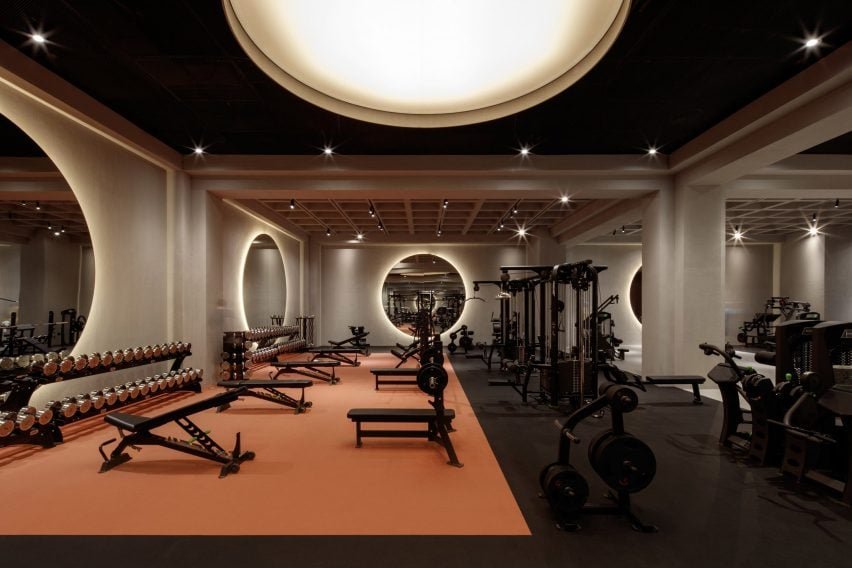 SourceSimilarly, a pleasant and non-intimidating spacious layout plan that exhibits a strong focus on design and zones is essential to boost the gym’s appeal towards the target demographic. High ceilings, ample circulation and subtle switches from a dense to an open area ensure flexibility within the indoor environment and helps avoid a “boxed-in” feeling.
SourceSimilarly, a pleasant and non-intimidating spacious layout plan that exhibits a strong focus on design and zones is essential to boost the gym’s appeal towards the target demographic. High ceilings, ample circulation and subtle switches from a dense to an open area ensure flexibility within the indoor environment and helps avoid a “boxed-in” feeling.
Colours and décor choices
Today’s gym and fitness centres are more than just rooms of equipment surrounded by plain, concrete walls. Colour psychology plays a significant role in creating an impressive and dynamic setting — the use of fresh, energising hues perfect for high adrenalin zones — and more subtle tones to create a calm and tranquil environment fitting for holistic workouts.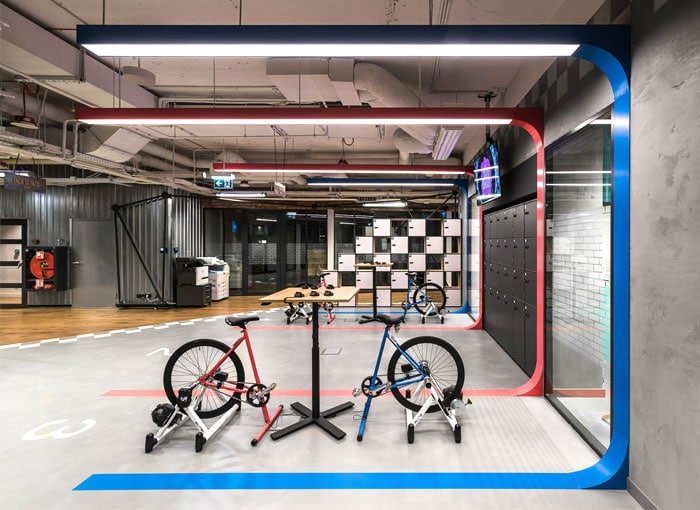 Source
Source
Passionate colours
Vibrant colours like red or orange create visual energy that helps clients to power through high-energy and intense workouts. Cardio exercise is also augmented by bright hues in which just a splash of red can increase the heart rate, orange can stimulate the thoughts, while yellow increases the feelings of cheerfulness and enthusiasm.
Cooling colours
Colours such as blue and ocean green can work well to give a cooling effect. They trick the mind to have a cool sense and combats overheating during workouts. They can also evoke the success feeling that motivates gym members to achieve a strong fitness goal.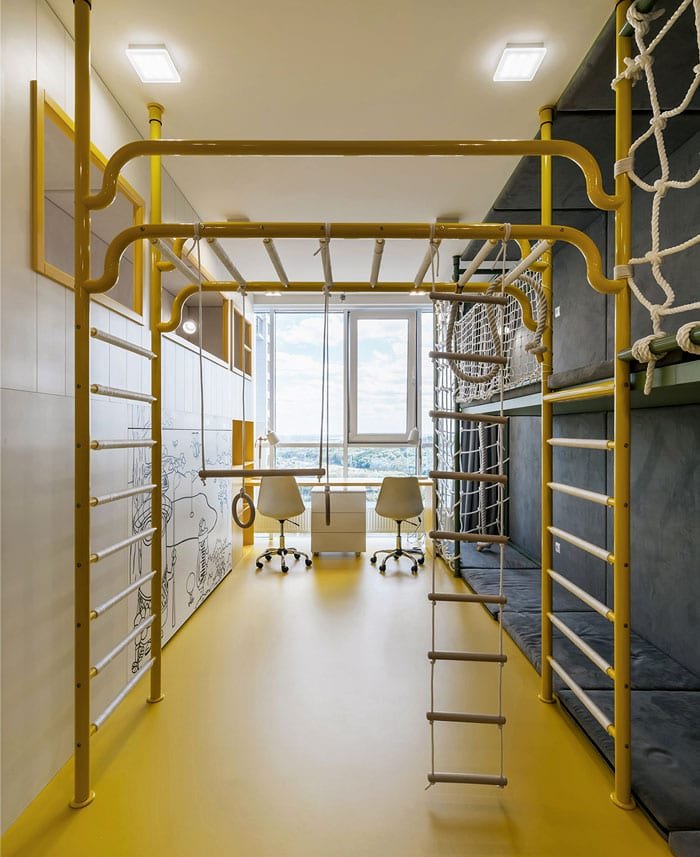
Trusted colours
Simple and neutral colours such as off-white and beige are essential for yoga and meditation rooms. These colours offer a more pleasant and calming experience. They are less distracting and aid focus during workouts. And also, soothing neutral hues make the space much brighter, open and airy.
Flooring solutions
Gym flooring solutions come in a wide range of textures and functionality in which the sky really is the limit — from rubber floor tiles to hardwood gym flooring. It should be a strong, durable surface that supports the different areas to be included, as well as the types of equipment in each zone.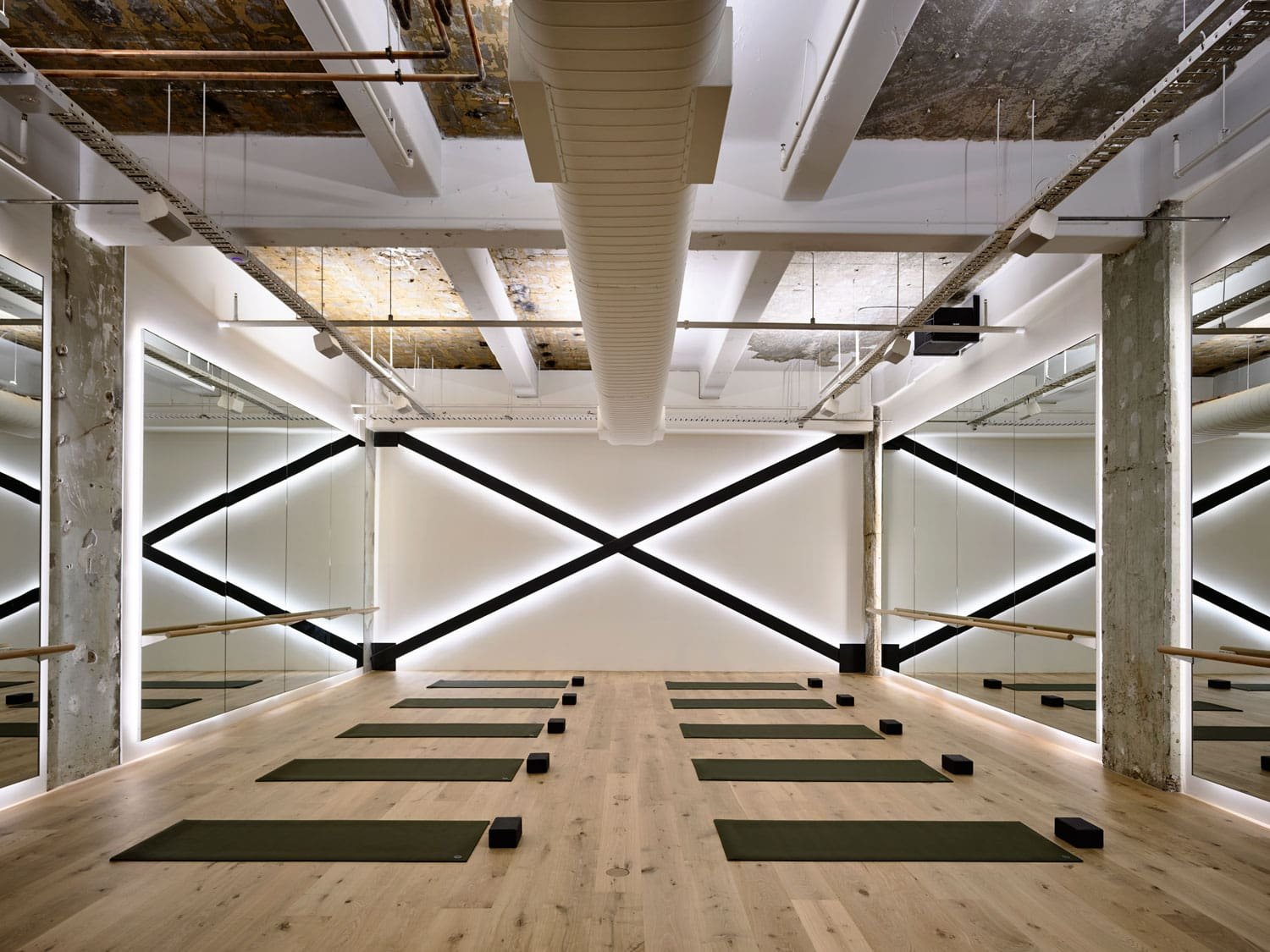 Source
Source
Biophilia and indoor environment quality
Biophilic design is a fundamental concept that respectfully harnesses the restorative, energising properties of mother nature that influence physical health and our emotional state of mind. So where better to implement this nature-inspired approach than in a gym, fitness studio or yoga room where improved wellbeing is the goal?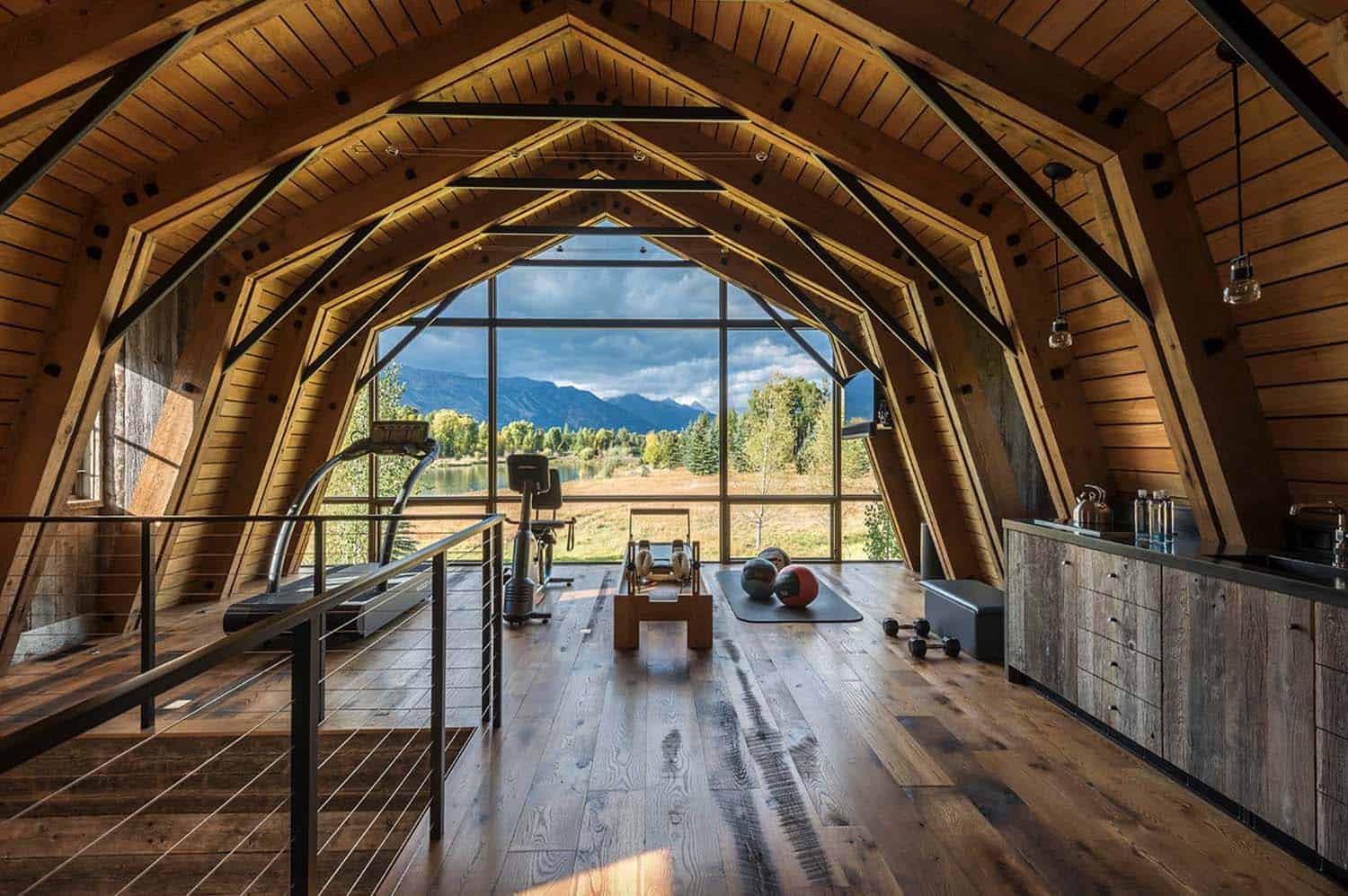 Source Integrating remnants of the great outdoors (abundance of greenery, natural light, organic shapes that mimic nature’s patterns, soothing palette of earthy tones and natural material like wood and stone) into the gym concept from the early stages of design is a powerful key to success in fitness club interior design.
Source Integrating remnants of the great outdoors (abundance of greenery, natural light, organic shapes that mimic nature’s patterns, soothing palette of earthy tones and natural material like wood and stone) into the gym concept from the early stages of design is a powerful key to success in fitness club interior design.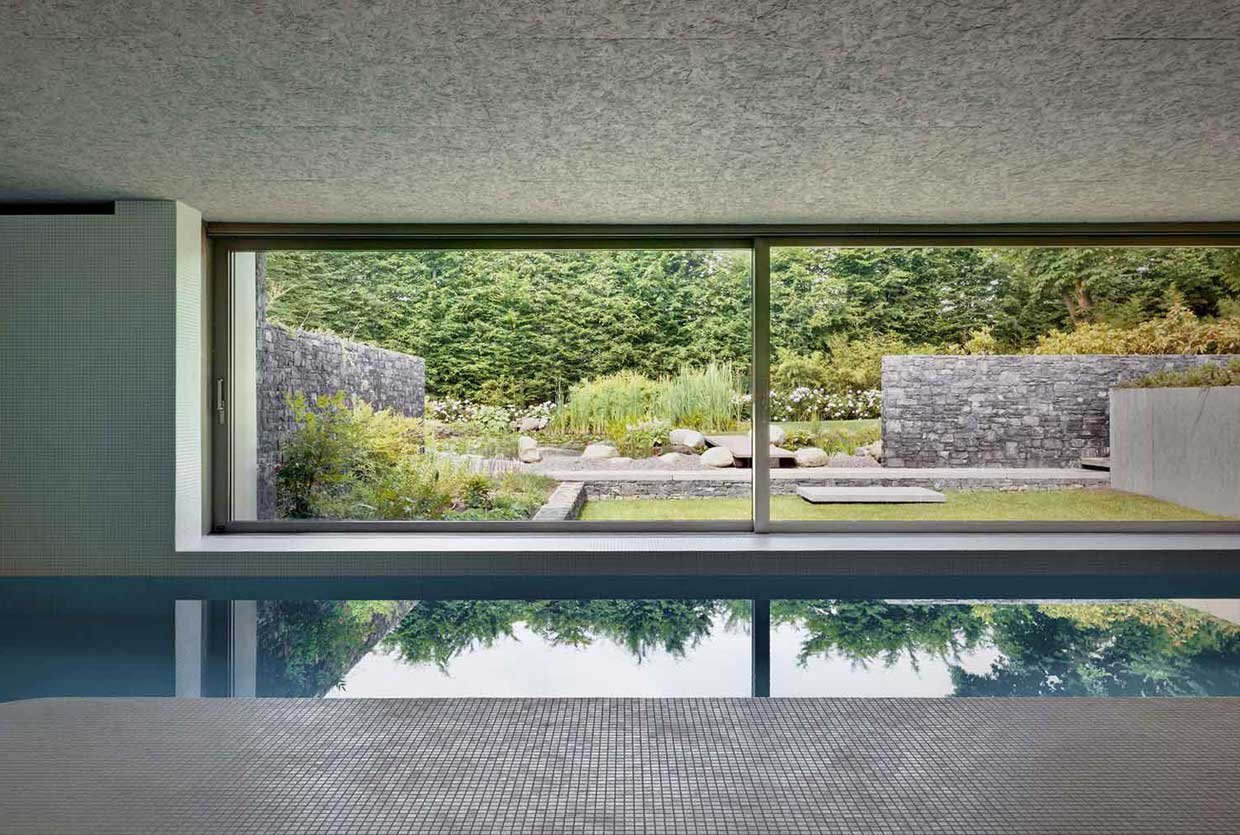 Source
Source
Lighting and ambience
As your gym concept evolves in form and finishes, lighting and ambience should be right at the top to amplifier the overall design and brand aesthetic. To be clear, natural light plays a vital role in ensuring that “feeling good” goes far beyond just an aesthetically pleasing space.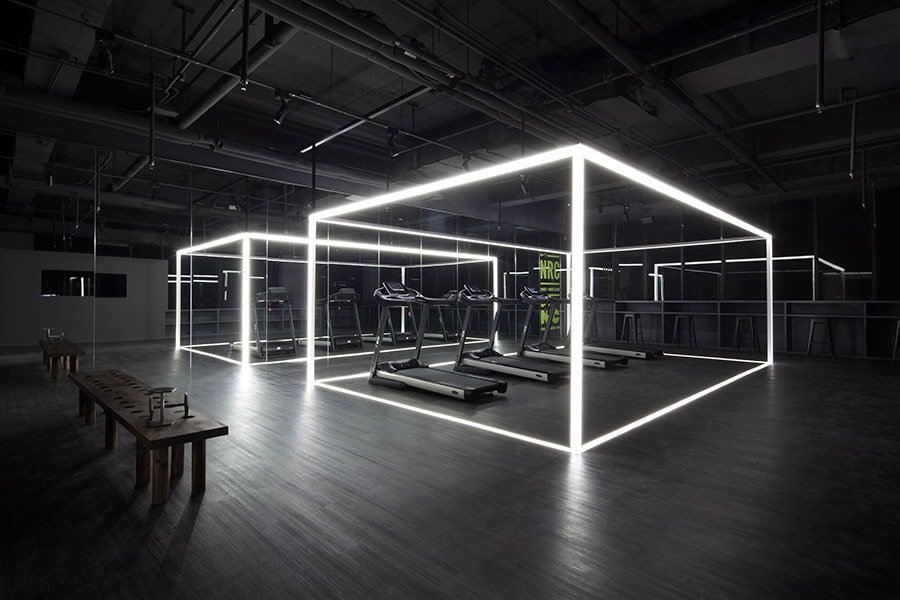
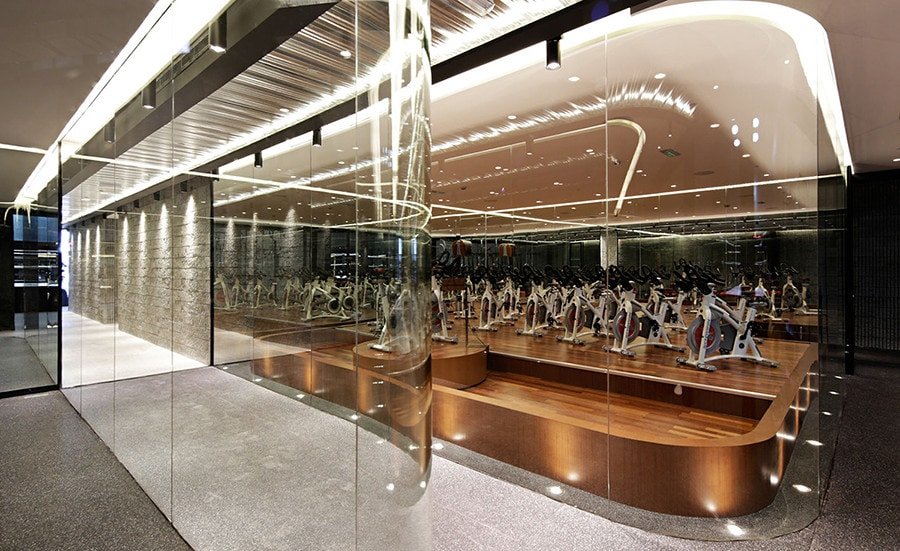 If location makes it impossible to have access to adequate natural light, consider investing in lighting that replicates the same rejuvenating feel and make the interior as inviting as possible.
If location makes it impossible to have access to adequate natural light, consider investing in lighting that replicates the same rejuvenating feel and make the interior as inviting as possible.
Good gym design creates a great atmosphere
A professional interior designer makes sure that the atmosphere of the gym and workout facility, yoga retreat or wellness hub is compatible with the end-user. Space should offer a look and feel that makes patrons want to linger well beyond the 30 minutes fitness session.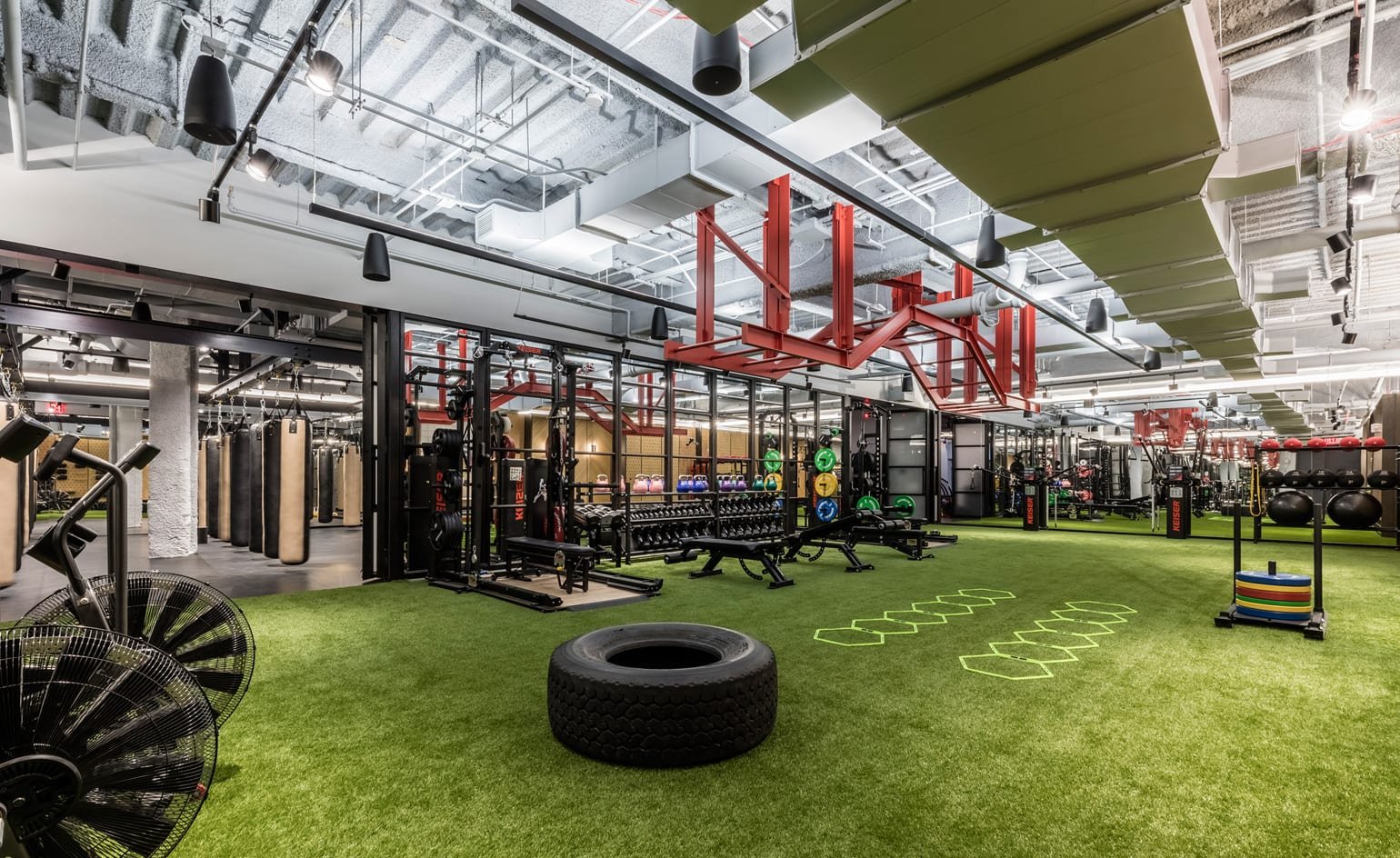 SourceProfessional designers offer project-based services that integrate every piece of interior planning in order to convert an indoor environment into an inclusive fitness haven that evokes health, relaxation and groundedness.
SourceProfessional designers offer project-based services that integrate every piece of interior planning in order to convert an indoor environment into an inclusive fitness haven that evokes health, relaxation and groundedness.
Final thoughts
For the fitness and wellness industry, the role that interior design plays cannot be overstated. As we become more health-conscious, gyms are now being viewed as essential components in our daily life. As such, gym and fitness hubs should pay strong attention to design trends that align closely with the well-being policies of the modern world.A thoughtful gym interior emphasises and supports the many strands of environmental and human ethics, as well as the global pursuit of good health and happiness. Additionally, wellness-driven design strategies that implement the correct use of space, lighting, colour schemes and material selection, not only maximise user-satisfaction, but also ensure a greater turnaround on customer attraction and, ultimately, long-term retention.
